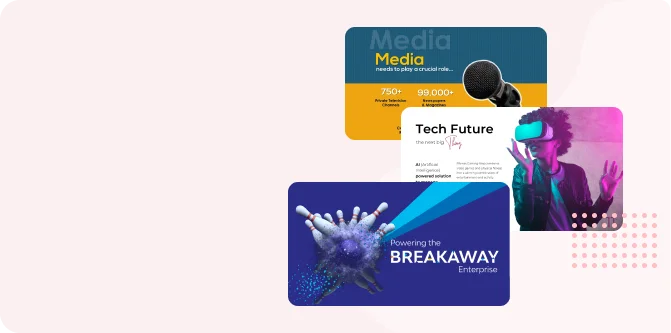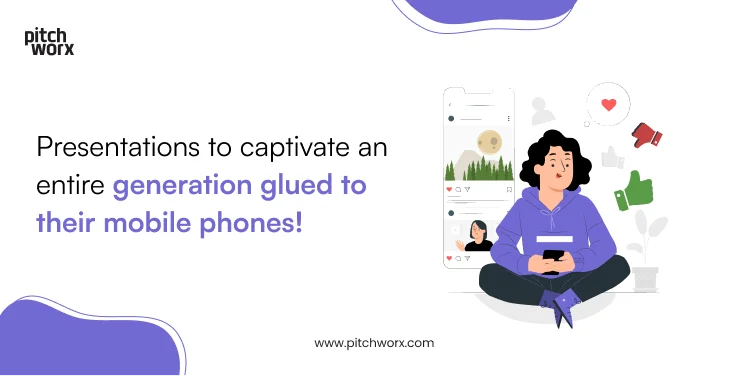For a corporate trainer, impactful slide design is always a secret weapon for delivering engaging and memorable training sessions. But creating clear, aesthetically pleasing slides that truly enhance the learning experience is no easy feat!
Through years of experience and experimentations as a presentation design agency, we’ve picked up some best practices for designing corporate training slides that drive key messages home and keep audiences tuned in. In this post, I’ll share our top tips for trainers to create winning PowerPoint decks.
Choose a consistent and legible font
We have all become a bit obsessed with selecting the perfect font for presentations. Though it sounds tedious, subtle details like font style and size greatly impact the training experience.
From experience, clean and simple sans-serif fonts like Arial, Calibri and Helvetica are your best bet for slide content. They are crisp and easy to read even from a distance.
Sticking to one or two fonts throughout the presentation for a cohesive look is a good tip for designing corporate training PPTs. I learned this lesson the hard way after going font crazy and using multiple styles that ended up looking disjointed.
Make sure to use a large enough font size based on your presentation format. For slide titles, consider at least 28-point size text. For body content, don’t go smaller than 24-point. It might seem massive while creating slides on your laptop, but this ensures text stays legible when projected.
Use high-contrast color combinations
Color choice plays a huge role in keeping slides easy to read. As a presentation design agency, we avoid intricate color schemes and instead opt for high contrast between text and background colors.
Dark text on a light background works best for maintaining clarity. And steer clear of red or green text, which tends to look blurry and can be indistinguishable for some audiences.
While colors like yellow on black might pop, they usually strain the eyes. Keep it simple with a white or light gray background and black, dark blue or dark gray text. A dash of color for emphasis is great but use it sparingly to maximize impact.
Limit text for maximum impact
Having seen a few overly text-heavy PowerPoints, we quickly learned that less is more on slides. Now, the golden slide design tip for corporate training presentations to follow is limiting slides to one key idea or data point, conveyed through 6 lines of text max.
This prevents slides from getting cluttered and allows the audience to digest each main point. To keep things concise, you can use short bullet points, statistics pulled from analyses, brief quotes, and crisp sentences instead of lengthy paragraphs.
The presentation deck provides support for the broader training, so there is no need to restate every detail on the slides themselves.
Use engaging visuals and media
Hearing a compelling statistic is one thing, but seeing it depicted visually takes the impact to the next level. Charts, graphs, illustrations and photos related to key messages help cement concepts for audiences. This is a solid slide design technique for effective corporate training.
For instance, an audience may quickly forget the exact sales growth percentage you state. But show a pie chart that illustrates the sales jump, and that visual tends to stick in their mind.
You can also sprinkle in relevant photos and videos where appropriate. Just be sure any visuals are easy to decipher and focused on highlighting the core idea you want to convey on that slide.
Keep the look clean, consistent and clutter-free
There’s an art to arranging slide content in a clean and consistent way that doesn’t distract from the core message.
One of the slide design best practices for training workshops is to maintain a unified feel across the presentation by using the same slide layouts, fonts, color schemes and stylistic choices for images and graphic elements. Too many competing visual styles can make the deck feel disjointed.
For individual slides, avoid cramming too many objects, words, colors and animations together. While some trainers enjoy flashy transitions between complex slides, we actually think subtle and seamless is best for learning retention.
Use slide layout techniques like the “rule of thirds” to thoughtfully balance negative space and prevent visual clutter. Place key points strategically on the slides and ensure nothing feels crammed together.
Ensure accessibility for all learners
With diverse and global workforces, accessibility is crucial for successful corporate training. You can aim for slides that are inclusive for all learners by considering the following:
- Using sufficient color contrast ratios for text visibility.
- Providing written descriptions (alt text) for any images.
- Avoiding color combinations that may be indistinguishable for color blind trainees.
- Selecting sufficiently large font sizes. Small text strains the eyes.
- Using simple slide layouts that are screen reader friendly.
Leverage white space for impact
We all need to be a reformed “content maximizer,” and henceforth grow to appreciate the power of white space! Now, a good corporate training PPT slide design technique is to leverage blank areas around key text and graphics to declutter busy slides and draw the viewer’s eye towards the most important elements.
This also builds in “breathing room” to allow audiences to comprehend each slide without feeling overwhelmed. Not every inch of space needs to be filled on every slide. Sometimes, less is truly more.
Refine and practice for presentation perfection
As you finish creating any training PowerPoint by going through the entire deck slide-by-slide, it’s important to understand slide design strategies in training PPTs and ask yourself:
- Is each slide easy to interpret at a glance?
- Are fonts and colors maximally legible?
- Do visuals and graphics support key messages?
- Is anything distracting or unnecessary on each slide?
Then practice presenting with the slides and refine any trouble spots. For instance, you may realize certain build animations are more distracting than helpful and remove them.
It takes time to refine slides, but this polishing will take your training sessions from good to great.
With the increasingly visual world, impactful slide design is a core competency for corporate trainers. While it does take skill and practice to master, deliberately incorporating the techniques above will get you well on your way to presentations that wow and inform.
Let us know if any of these tips resonate with your experience or if you have additional insights to share! As a presentation design agency, thoughtfully designed slides have always amplified our clients’ training and we hope these suggestions help corporate educators engage audiences and make learning stick.






